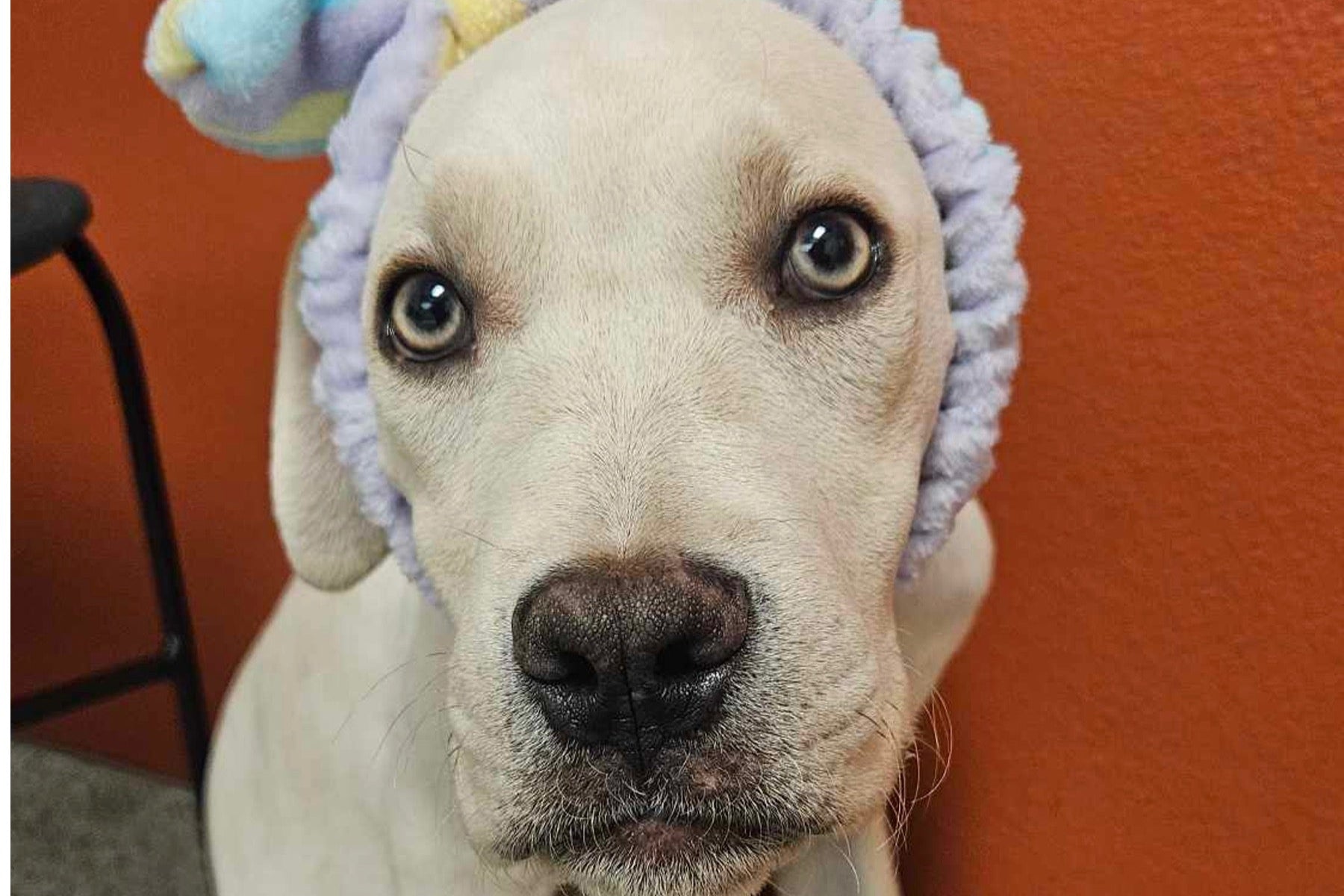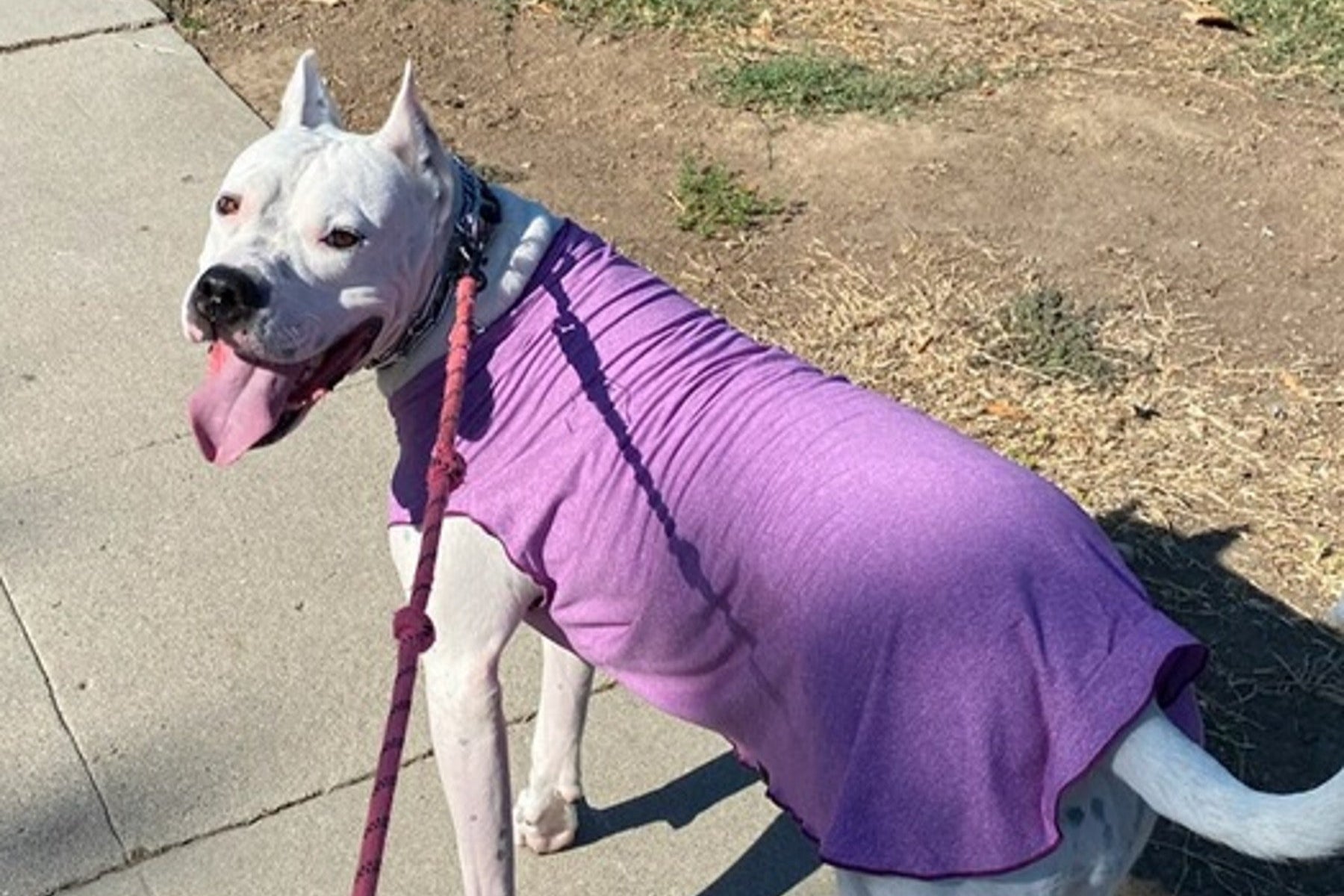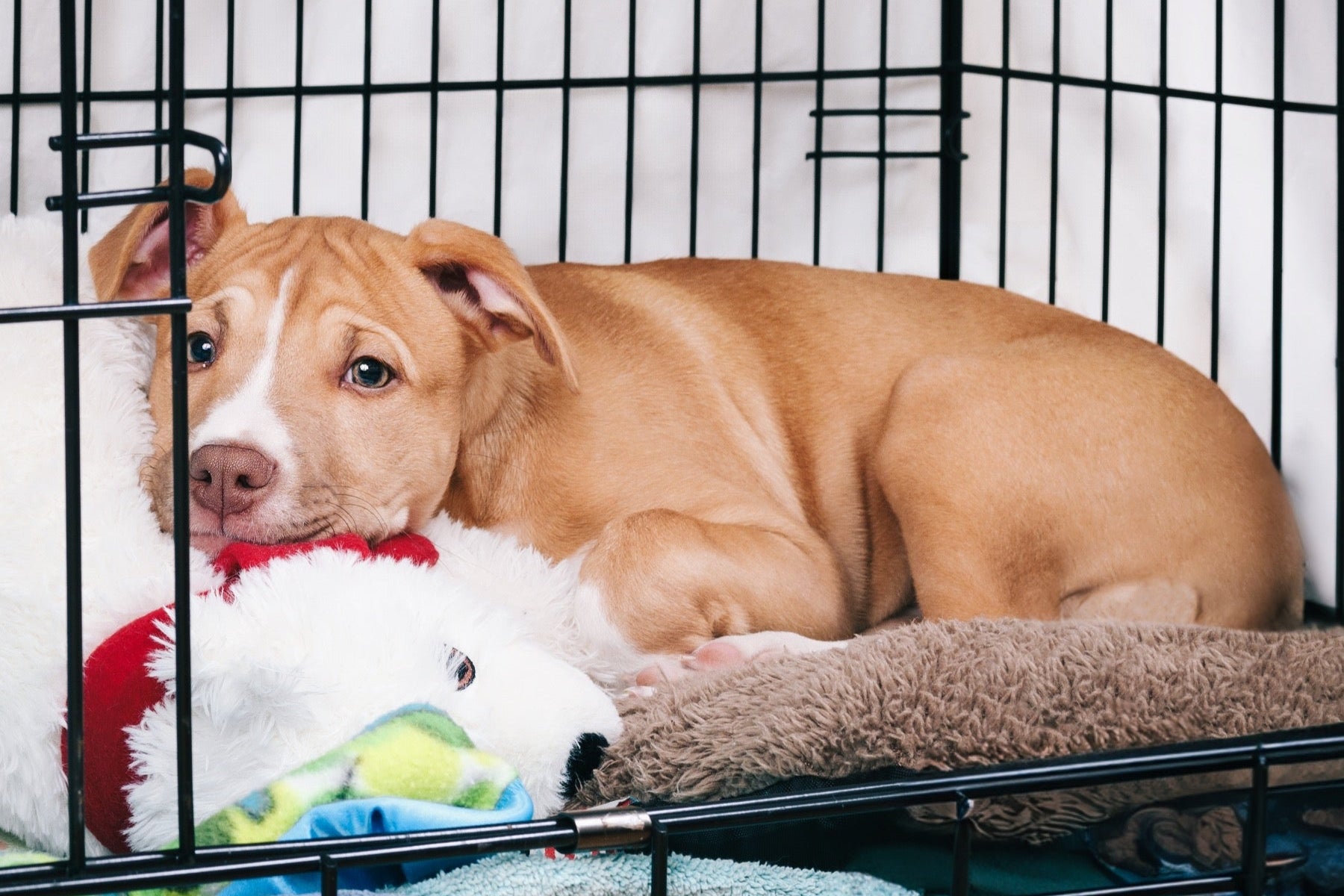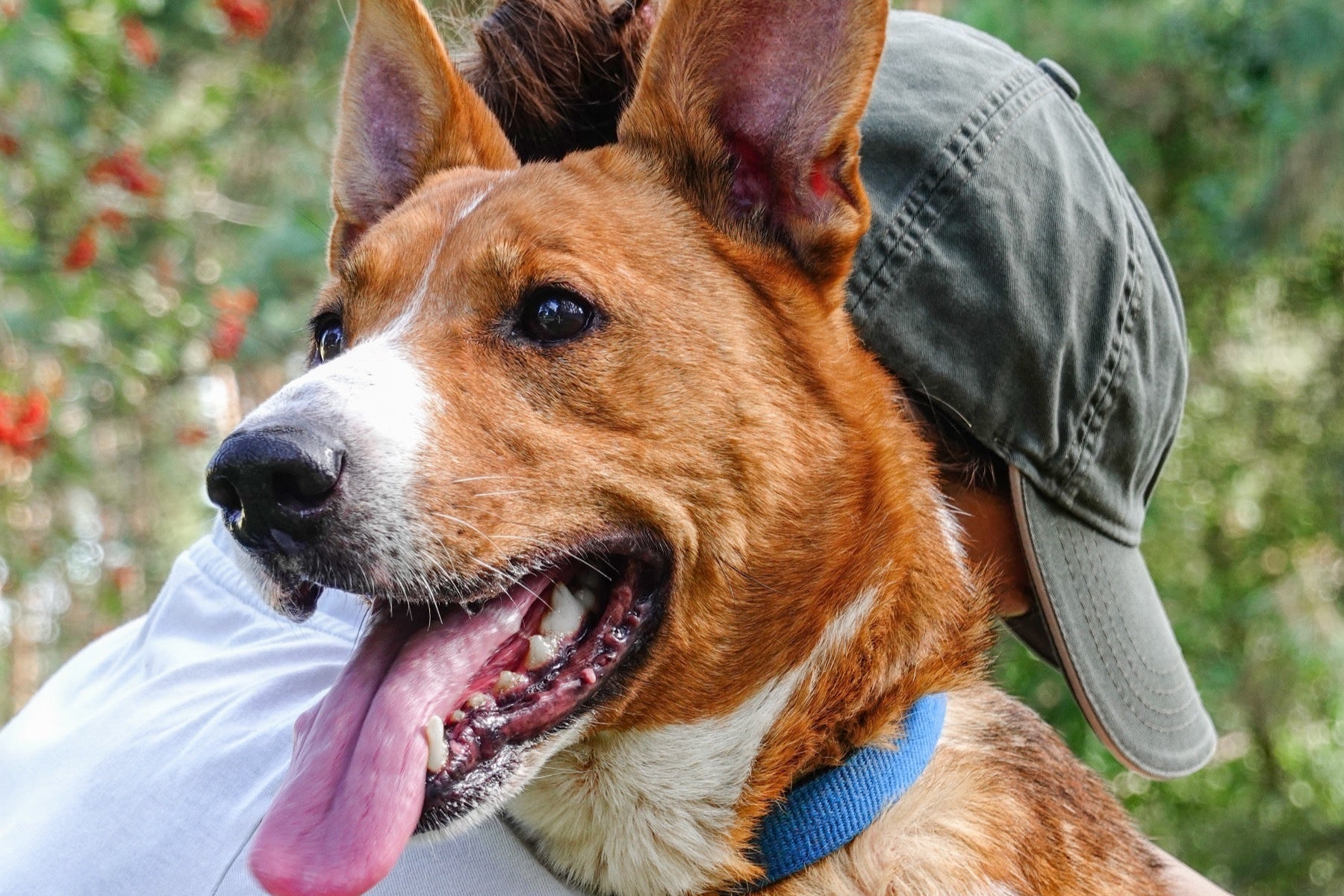Five steps to fostering a rescue dog
Our foster process is simple yet thorough, as we are committed to ensuring the perfect temporary home for a newly rescued dog in need. Have questions? See the FAQs below.

A newly rescued dog needs you...
Step 1: Apply
An incredibly rewarding experience, fostering offers a newly rescued dog a safe and loving temporary home. Click the button below to fill out the application form answering details about your lifestyle, experience with pets, and home environment, including current rental policies or home ownership. By fostering you are providing much-needed care AND relieving pressure on CA's overcrowded shelters. Thank you for choosing to make a real difference in a dog's life while they wait for their forever home!

Tell us about yourself
Step 2: Home Visit · Interview
Once your application is reviewed, we schedule a home or virtual visit and interview. We typically check for safety and suitability of your residence (secure fencing, other pets or people in the home and areas for the dog to rest and play). We ask questions about your experience with dogs, your daily routine, and how you plan to care for the dog. This ensures that expectations align and that the dog will be in a safe environment until their forever home.

Supply kit incoming
Step 3: Supplies for success
Once your application is approved (post home/virtual visit and interview), we discuss home preparation with you. We will order, gather and deliver (if you are close to a foster coordinator) all supplies needed for your foster dog. Supplies include but are not limited to crate and bed, food, bowls, leash, collar, toys/enrichment supplies, medications (if necessary), etc. We will also review the list of expectations for your foster dog's care, including consistent communication and updates about their well-being.

Time to prepare
Step 4: Prep for arrival
Prepare your home for your foster's arrival. Start by securing any potential hazards, like toxic plants, electrical cords, or small objects that could be swallowed. Make sure you have a designated area for the dog to sleep, such as a comfy bed or crate, and ensure there's enough space for them to move around freely. Set up a designated area for feeding. If you have other pets, we recommend installing gates, creating separation before introducing. We will guide you through proper introductions. Preparing your home not only ensures the foster dog’s comfort but also sets up a smooth transition for both you and the dog during their time with you.

Safe and sound
Step 5: Welcome home
When your foster dog arrives, it can be exciting and overwhelming. Give yourself and the dog grace - the dog may be nervous or unsure, so give them time and space to adjust. Slowly introduce them to their designated area, offer them food, water, and a cozy bed to help them feel more comfortable. Keep the environment calm and quiet for several days. Limit the number of new people they meet and do not introduce to other pets without our approval as we want to prevent stress-related occurrences. Patience and understanding is essential for a trusting relationship between you and your foster dog.
Foster Process FAQs
Below we answer common questions regarding our fostering process.
What am I responsible for as a Foster?
As a Foster, our expectations of you would be the same as if you were an adopter. Fosters are responsible for providing a safe, loving, and temporary home for the amount of time they have specified.* Main duties include feeding, providing water, and ensuring the dog receives proper exercise, playtime. They must also help with basic training, such as housebreaking, leash training, or teaching good behavior. Additionally, fosters are responsible for maintaining the dog's health by attending scheduled vet appointments, administering any prescribed medications, and monitoring their general well-being. Fosters are also responsible for documenting the foster dog’s behavior and progress and communicating updates consistently with the rescue. These updates will help find the best forever home for the dog. Fosters must also be patient and compassionate, helping the dog adjust to its new environment while ensuring it feels loved and secure. *We are understanding and flexible with Foster schedules and unforeseen circumstances (i.e. a dog isn't working out in the home), so we will do everything we can to mitigate hiccups and ensure a positive fostering experience.
How long do I have to foster a dog for?
This is entirely up to you. We do occasionally have short-term fosters for dogs i transition (i.e. waiting for transportation, etc.) but we do request that those interested in fostering commit to a minimum of three months or longer. We understand that three months is a significant commitment BUT it offers a dog a stable and supportive environment . This length of time helps the dog adjust to family life, establish routines, and address any behavioral or medical needs.
A three-month fostering period allows the dog to build trust with you, which is especially important as rescue dogs who have experienced trauma, a rough past or are shy and fearful. It also provides ample time for the foster family to work on socialization, training, and helping the dog feel comfortable in new situations. While it requires dedication and patience, fostering a dog for this extended period gives the dog a solid foundation to decompress, adjust, settle in and thrive in their future home, making it an incredibly rewarding experience.
What if my foster dog isn't working out?
We are understanding and flexible with our Foster's schedules and unforeseen circumstances such as a foster dog not working out in the home. We will do everything we can to mitigate any hiccups and ensure a positive fostering experience. If a dog needs a new foster home, we will immediately remove the dog from its current situation and secure another. We are always prepared for these unforeseen circumstances. Always reach out if your foster experience is less than, not as expected. We will help in any way we can.
Who do I contact for all my foster dog's needs?
Please contact our team at (603) 609-8594 (call or text 24/7) or email wileyswish@gmail.com. We will get back to you ASAP with answers to your questions, concerns, requests.
What if I work full-time: Can I still foster?
Yes, it is possible to foster a dog and work full-time if you plan effectively. Our team can help you choose a breed that can adapt to alone time, so long as a consistent routine for walks and play is established, or other supportive measures can be taken (i.e. family and friends come to help visit with or walk and feed the dog, etc.), We encourage fosters who do work full-time to be honest about their time and commitments as we want our dogs to have an enriching experience with you - engaging in quality time with you to bond.
How does my foster dog get seen and adopted?
Networking and marketing of a dog begins the second they are rescued. Videos, social media posts, listings on several pet adoption websites all commence so that your foster dog has maximum exposure to potential adopters. We also invite our fosters to share with us photos, videos, testimonials, documentation about their foster dog, AND share to their social media channels (with our approval or collaboration) as this hands-on information is valuable. We also host meet and greets so people can get to know dogs in a one-on-one setting.
What if I have other pets in the house?
If you have other pets in the house, this information should be shared in the application process. We like to understand the full and complete dynamics of the household including permanent pets, their routine, ages, breeds, temperament and it there are any behavioral issues (e.g., anxiety, territorial behavior) to ensure compatibility.
Meet and greets ahead of time may be done before finalizing the foster arrangement to ensure everyone gets along. If a meet and greet does not occur, we require that during the first 5-7 days, you do NOT introduce your foster dog to your pets. Decompression time and space is crucial for newly rescued dogs to have, so if at all possible, we ask household pets be kept separate from the rescue. When this time has passed and you've consulted with us on how to perform a proper introductions, we recommend going introducing slowly for short periods of time to start (i.e. introductions should be done one pet at a time).
All pets in your household should be up-to-date on vaccinations, flea and tick prevention, and other health protocols before introducing your new foster dog so as not to pose a health risk.
We should note that some fosters may have behavioral challenges, such as food guarding or anxiety around other animals. Our certified trainers and behaviorists will help inform you of ways to manage these behaviors with guidance on how to handle specific issues that may arise.
What are the Foster requirements?
- Foster must be 21 or over (or 25 for most strong breeds and all bully breeds);
- Renters must have written agreements from their landlord to allow dogs;
- Previous dog experience is a plus, but not a requirement;
- Identification of experience or capabilities (medical, shot-term, long-term, special needs capabilities);
- All resident dogs must be spayed or neutered, vaccinated, and be in good health or under the care of a veterinarian;
- Foster must have the physical ability to handle animals in their care - lift, carry;
- Foster agrees to have open, honest and frequent communication/updates with the rescue;
- Foster must be able to follow our rescue’s policies and safety protocol, and exhibit the ability to make appropriate judgment calls and ask questions when needed

